Back
Build it and they will come (and then
ask you to build another).
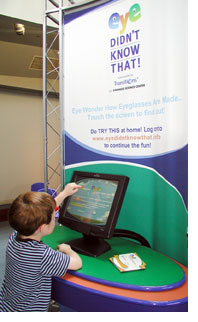 Over
the past six years, Carnegie Science Center has designed
and built 80,000 square feet of permanent and traveling
exhibits, and much of that work was either commissioned
by other institutions or is being enjoyed by others through
the Science Center’s traveling exhibits. Some of
its permanent offerings such as the UPMC SportsWorks exhibits
are so popular, in fact, that it’s not unusual for
the Science Center’s exhibitions staff to receive
calls from institutions as far away as Israel. Over
the past six years, Carnegie Science Center has designed
and built 80,000 square feet of permanent and traveling
exhibits, and much of that work was either commissioned
by other institutions or is being enjoyed by others through
the Science Center’s traveling exhibits. Some of
its permanent offerings such as the UPMC SportsWorks exhibits
are so popular, in fact, that it’s not unusual for
the Science Center’s exhibitions staff to receive
calls from institutions as far away as Israel.
“I received a call about recreating our sports exhibits
for a group in Israel just the other day,” says Tom
Flaherty, maintenance and operations director for the Science
Center. “We receive those kinds of calls every day,
from every corner of the world, requesting our help building
exhibits or inquiring about renting a traveling exhibit.”
Among
the Science Center’s clients are the Miami
Museum of Science, the New York Hall of Science, Space
Center Houston, the Maryland Science Center, the NCAA Hall
of Champions, and Transitions Optical, a joint venture
between PPG Industries Inc. and France’s Essilor
International, which approached the Science Center in 2004
about designing a traveling exhibit on vision and eye health.
In less than three months, the Science Center exhibits
team conceived, designed, and fabricated Eye Didn’t
Know That, an 1,800 square-foot traveling exhibit that
stopped for a visit at its Pittsburgh homebase this summer
before moving on to Science World in Vancouver, British
Columbia. Transitions Optical and PPG recently announced
they would donate the exhibit to the Science Center once
its current tour is complete.
“
We strive to make our exhibits relevant and accessible
to a diverse population,” Flaherty notes. And with
traveling exhibits such as ZAP! Surgery still touring the
United States after five years on the road, and more calls
coming in every day for custom work, obviously they’re
succeeding.
To Russia with Warhol.
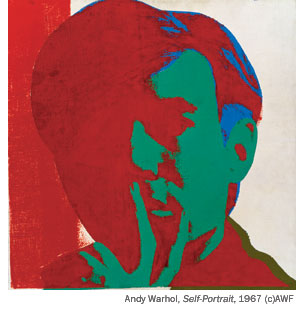 Would
Andy ever have guessed they’d someday wait in line
to see his work in Russia? They did in the summer of 2000,
when the first eastern European traveling exhibition of
Warhol art opened to the public in Moscow. And they’ll
probably do it again this fall, as a much larger and more
comprehensive exhibition, Andy Warhol: Artist of Modern
Life, sponsored by Alcoa Foundation and Alcoa, starts a
three-Russian-city tour this September. Would
Andy ever have guessed they’d someday wait in line
to see his work in Russia? They did in the summer of 2000,
when the first eastern European traveling exhibition of
Warhol art opened to the public in Moscow. And they’ll
probably do it again this fall, as a much larger and more
comprehensive exhibition, Andy Warhol: Artist of Modern
Life, sponsored by Alcoa Foundation and Alcoa, starts a
three-Russian-city tour this September.
“
We are proud to sponsor this exhibition, to bring masterpieces
and archival riches of The Andy Warhol Museum to the people
of Russia,” says Alcoa Chairman and CEO Alain Belda.
He adds that, with the company’s acquisition of two
Russian fabricating plants in Samara and Beleya Kalitva,
Russia, “this exhibition celebrates Alcoa’s
presence in Russia.” It also offers a nice connection
between the city where Alcoa was established—Pittsburgh —and
communities in Russia where so many new Alcoans live.
Andy
Warhol: Artist of Modern Life will feature more than 300
paintings, drawings, photographs, films, and archival
material from the museum’s permanent collection,
as well as a
catalogue and educational components created specifically
for Russian audiences.
“
The previous exhibition of Warhol in Russia provided merely
a soupcon of Warhol’s vast body of work,” says
Thomas Sokolowski, director of The Warhol. “This
new exhibition offers a more comprehensive, multi-faceted
look at Warhol’s artistic career.”
Russia can’t wait.
A new face of contemporary
art in Pittsburgh
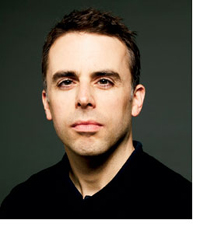 He’ll
travel the world to find the next big things in contemporary
art—and bring them back to Pittsburgh. He’s
Douglas Fogle, the new curator of Contemporary Art for
Carnegie Museum of Art. Fogle will be responsible for organizing
the next Carnegie International, scheduled to open in May
2008. Most recently, he was curator of Visual Arts at the
Walker Art Center in Minneapolis. He’ll
travel the world to find the next big things in contemporary
art—and bring them back to Pittsburgh. He’s
Douglas Fogle, the new curator of Contemporary Art for
Carnegie Museum of Art. Fogle will be responsible for organizing
the next Carnegie International, scheduled to open in May
2008. Most recently, he was curator of Visual Arts at the
Walker Art Center in Minneapolis.
"Douglas embodies characteristics that distinguish
the best curators of contemporary art,” says Richard
Armstrong, The Henry J. Heinz II Director of Carnegie Museum
of Art. “His
prescience and empathy, articulate thinking, and organizational
skills make him rare among his peers as well as a tremendous
addition to the arts in Pittsburgh.”
“
I’m honored to have been invited to join an institution
that has been at the forefront of presenting the ‘new’ to
local, national, and international audiences for more than
a hundred years,” Fogle says. “I am equally
excited about the incredible possibilities that the Carnegie
International will offer me as a curator to open a dialogue
between the world at large and the community of Pittsburgh.” Fogle
succeeds Laura Hoptman as the museum's Contemporary Art
curator.
Why not raise a little Carnegie Cash this school-fundraising
season?
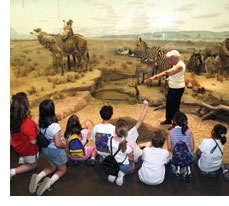 It’s
back to school: time for reading, writing, and fundraising. Before you gain
another pound (or two) buying the rest of your kids’ unsold candy bars,
talk to their teachers or your fellow PTA moms and dads about Carnegie
Cash for Schools, a way to earn money for schools through the renewal or new sale
of Carnegie Museums memberships. It’s
back to school: time for reading, writing, and fundraising. Before you gain
another pound (or two) buying the rest of your kids’ unsold candy bars,
talk to their teachers or your fellow PTA moms and dads about Carnegie
Cash for Schools, a way to earn money for schools through the renewal or new sale
of Carnegie Museums memberships.
“
At almost any school in the region, many of the students’ families
are already members of Carnegie Museums or are planning to be—so
the school could earn money just by asking its families to renew their
Carnegie
Museums memberships, or purchase new memberships, as part of this program,” says
Karen Poirier, director of Membership at Carnegie Museums.
It’s simple
enough: when any new or renewing membership is registered as a “Carnegie
Cash for Schools” purchase, the school associated
with the transaction gets cash back—$10 for each new membership and
$5 for each renewal. The school can also receive cash bonuses and savings
on school field trips to the four Carnegie Museums. Anyone can help raise
money through Carnegie Cash for Schools—parents, alumni, friends,
neighbors, grandparents, and even out-of-town relatives.
“
Best of all, students do no selling and collect no money, so they can
concentrate on learning,” Poirier says. “And the school
community feels great because it’s supporting three great causes:
its families, its schools, and Carnegie Museums of Pittsburgh!”
More
than 50 area schools are currently signed up for the program. To
find out if your child’s school participates, or to get more
information about Carnegie Cash for Schools, visit the Member Center
at www.CarnegieMuseums.org,
or call 412.622.8860.
He conquered the Nile—find out
how on October 27
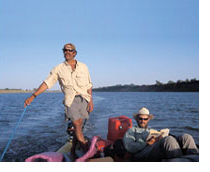 Pasquale
Scaturro (standing left) has climbed Mount Everest twice,
the second time leading a blind climber to the summit.
And he’s well-known for being one of the world’s
most experienced river guides, whose most recent exploits
on the Nile River are captured in the current OMNIMAX® movie
at Carnegie Science Center, Mystery of the Nile. Pasquale
Scaturro (standing left) has climbed Mount Everest twice,
the second time leading a blind climber to the summit.
And he’s well-known for being one of the world’s
most experienced river guides, whose most recent exploits
on the Nile River are captured in the current OMNIMAX® movie
at Carnegie Science Center, Mystery of the Nile.
On October
27, Scaturro will bring his adventurous spirit and knack
for telling a good story to the Science Center
for a one-night-only guest appearance. After a special
showing of Mystery of the Nile, he’ll share some
additional insights into his trip down the famed river
with explorer and filmmaker Gordon Brown. The duo became
the first to make—and live to talk about—the
3,250-mile voyage from the mouth of the river to the Mediterranean
Sea.
Scaturro kept a journal throughout the 114-day journey,
which brought the team face-to-face with unfriendly hippos
and crocodiles, blinding dust storms, “bone-crunching” class
6 rapids, unfathomable heat, and bullets fired by guards
of various nationalities protecting their turfs. Want to
know which of these obstacles caused Scaturro the most
grief during his 114 days on the Nile? Come to Carnegie
Science Center on October 27 and ask him!
For more information,
call 412.237.3400 or visit the Science Center website
at www.CarnegieScienceCenter.org.
Back
| Top |